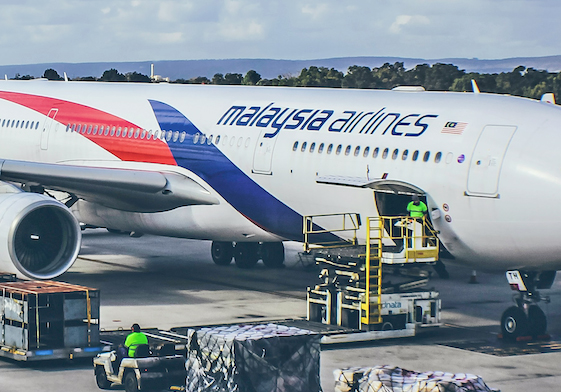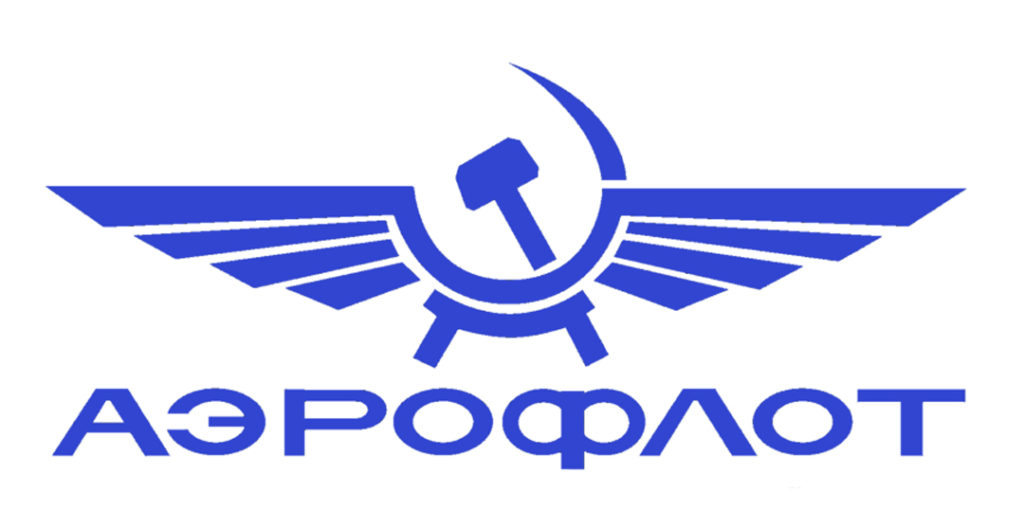The Mangling of Airline Names is Nothing New. But What’s This, an Error in The New Yorker!
Warning: the post below, much like its author, is pedantic, petulant, overbearing and annoying. Reader discretion is advised.
August 20, 2014
EVERYBODY messes up airline names. They spell them wrong, say them wrong, add letters and breaks and apostrophes where none belong, and so on. In the aftermath of the MH370 and MH17 incidents, for instance, we’ve had one mangling after another of the Malaysia Airlines name. No, it’s not that important, and I’ve eased up on correcting people, but there are times when you just can’t let it go. I was startled the other day to come across a slip up in, of all places, The New Yorker. There are fewer if any more impeccably edited and fact-checked periodicals, but there it is, in an essay by George Packer on page 85 of the August 11th issue. Packer makes a reference to “Malaysian Air” flight 17.
George! Of all people!
The name of the company is Malaysia Airlines. It’s not “Malaysian Airlines,” “Malaysia Air,” or “Air Malaysia.” And it’s certainly not the doubly wrong “Malaysian Air.”
What is it, anyway, with the shortening of the words “Airlines” or “Airways” into “Air”? “British Air,” “Singapore Air,” “Virgin Air,” “Malaysia(n) Air.” Is it unfamiliarity with certain airlines from overseas? We don’t say “American Air” or “United Air.” I realize that it’s fewer syllables, but it’s ugly-sounding and wrong.
As maybe you’ve heard, Malaysia Airlines is considering a name change — not terribly surprising after two notorious tragedies in less than a year. This doesn’t shock me, but it does concern me for a couple of reasons. First, is it really necessary? People are squeamish, but the bulk of travelers aren’t irrational enough to avoid a particular airline because it happened to be tragically unlucky. If the carrier wants to prove itself proud and resilient, it needs to think long term and should keep its identity intact. Second, Malaysia Airlines is such a classy and dignified name. It should stay that way. If not, and if the current trend in airline branding is any indication, we’re liable to end up with something truly awful, like “Jet Fun Asia” or “Malay Sunshine Fly.”
Airline malapropisms aren’t limited to the media or to industry outsiders. People I work with, many of them long-time veterans of the airline business, will sometimes speak of “Air Italia,” and I’ve encountered just about every possible variant of the pronunciation and spelling of the name Lufthansa, from the crudely phonetic (“Liftunza”) to the inexplicable (“Lefthoonza.”)
I think we’re good on Malaysia Airlines, but they’re just one of many common victims. If you’re an editor or reporter, here are some simple guidelines that will keep you from receiving a letter of correction from yours truly:
• Let’s be clear on this “Air” thing. There are no such things as “British Air,” “Virgin Air,” “Alaska Air,” or “Singapore Air,” just to pick four. British Airways, Virgin Atlantic (or Virgin America), Alaska Airlines and Singapore Airlines are what you mean. As to that first one, you can earn extra credit by calling it “BA,” as savvy fliers like to say.
• There’s no “Malaysian Airlines,” and there’s no “Iberian Airlines” either. It’s Iberia.
• You cannot fly to Rome on “Air Italia” or “Alitalian.” It’s Alitalia.
• To camel cap or not to camel cap? The Egyptian national carrier is EgyptAir, not “Egyptair” or “Egypt Air.” On the other hand, it’s Icelandair and Finnair, not “IcelandAir” or “FinnAir.” (Alas now defunct, though still fondly remembered, it was neither “SwissAir” nor “Swiss Air.” It was Swissair.)
• Pardon my nitpicking, but there is no “Delta Airlines” based in Atlanta, Georgia. There is only Delta Air Lines. I wish more carriers used this old-timey three-word style.
• In the old days one flew to Seoul on KAL, as everyone called it. But did that stand for Korean Air Lines, or was it Korean Airlines? I’ve got photos of aircraft on which both are painted. No matter, in 2014 it’s a short and simple Korean Air.
• There is no such thing as “China Air.” There is, however, China Airlines, the national carrier of Taiwan, Republic of China (ROC). There also is Air China, based in Beijing, in the People’s Republic of China (PRC). Don’t mix them up: the PRC is the sworn enemy and claimant of Taiwanese sovereignty, and China Airlines and Air China crews are known to engage in airport brawls and run one another off taxiways.
• Beware of redundancies when tempted to tack on any kind of “Air,” or “Airways” suffix, as it might already be there. SAS, for example, needs nothing of the sort, lest it become “Scandinavian Airlines System Airlines.”
• I know of at least two carriers that rely on the singular “Airline.” Emirates Airline, and the lesser-known Sky Airline of Chile. Frankly they’d be better off with the “s.” (Why does there have to be an “air” suffix at all? “Emirates,” alone and unadorned, is such a great-sounding name. Similarly, the full and annoying name of JetBlue is JetBlue Airways. What’s wrong with just “JetBlue”?)
• Lufthansa is Lufthansa. Sort of. Officially it’s Deutsche Lufthansa, which means, basically, “German Air Company” (The name derives from Luft, the German word for “air,” and Hansa, a Latin term meaning “guild”). On the emblem of a Lufthansa pilot’s hat it says “DLH,” taken from the full German name.
• KLM? Why that’s Koninklijke Luchtvaart Maatschappij, or “Royal Airline Company.” But you knew that.
• There is no “u” in Qantas. It’s taken care of by the Queensland part of Queensland and Northern Territory Aerial Services, as it was named more than 90 years ago.
• Everybody remembers the Concorde. More properly, everybody remembers Concorde. The plane’s makers always insisted the article extraneous. In a haughty Oxford accent you might have heard, “We’ll be arriving on Concorde at noon.” This is possibly the most pretentious bit of nonsense in the history of aviation; most of the time I go ahead and use the the.
• The The? Does anyone remember that song “Uncertain Smile” from c. 1983? I once had the extended version on a 12-inch 45.
Let’s go back to Lufthansa for a minute. Of all the endless manglings of this fine and handsome word, perhaps the most atrocious version is one heard dozens of times daily at Boston’s Logan International Airport. The offense takes place on Massport’s inter-terminal shuttle bus and aboard the MBTA’s Silver Line connection from downtown, both of which share a common audio loop that announces the occupants of each terminal. As the only airline pilot alive who doesn’t own an automobile, I take public transportation to and from the airport. And every time the bus nears terminal E, I clench my teeth and close my eyes as the tape goes through its alphabetical listing. It starts out fine. “This stop serves Air, France, Aer Lingus, Alitalia, British Airways” Then then, here it comes… “Loof-THUND-za.”
Say what?
“Loof-THUND-za,” the woman’s voice repeats. Not only does she screw it up, she makes a presentation out of it. Her voice drops an octave and appropriates the accent of a Teutonic demon.
Being touchy about these things, I’ve thought about protesting to Massport. But imagine how that might go:
PS: Yes, hello, I’m calling to complain.
MP: Oh, is this about the toilets in Terminal C? Sorry, we’re trying to…
PS: No, it’s about the bus. The shuttle bus.
MP: The bus? Did the driver swear at you? We have a special number for that, let me…
PS: No, it’s the recording, the tape recording that calls out the airlines at each terminal.
MP: I see. No problem. Is the volume too loud? Is there an airline missing?
PS: No, it’s not missing. It’s just all messed up.
MP: Oh. Which one?
PS: Lufthansa.
MP: “Lefthinza?”
PS: Yes. Or, well, no. Lufthansa.
MP: That’s what I said, Lifthoonsa.
PS: See, this is what I’m talking about. You’re not pronouncing it right, and neither is the tape. It’s very confusing. [Actually, it isn’t confusing at all, it’s just irritating.]
MP: All right, I will have our audio tape team look into this and call you back.
PS: Great, thank-you.
[Four days later Massport returns the call.]
MP: Yes, Patrick, our engineers have reviewed the recording. They could not find any problem. The voice clearly says “Lifthonser.”
PS: [exasperated] In fact that’s not what it says. It says “Loof-THUND-za.”
MP: [sternly] That’s what I just said, “Luftownza.”
PS: That isn’t what you said. And either way it’s wrong. Can’t you keep your diphthongs straight? Geez. What the hell is wrong with you people?
And so on.
That conversation never really happened, though I suppose it could have. And those of you who long ago decided that I’m a petulant crank are, once again, amply rewarded. But I am of the belief that every field, every specialty and sub-specialty, no matter how esoteric, needs its obsessives, and is richer for their efforts. To the layperson, such intense adherence to detail might seem undue, or comical. But without it, standards fall, and the transfer of information becomes corrupt.
From there it’s a slippery slope: the very building blocks of society begin to fissure and crumble. The terrorists have won!
In any event, we shouldn’t push it, lest Lufthansa be tempted to change its name. The only thing worse than a recorded voice announcing “Loof-THUND-za” would be one announcing “Air Germany.”
If you haven’t noticed, the global expansion of commercial aviation has brought with it some truly awful carrier names. In the past few years, more than 250 commercial operators have entered the market, the bulk of them with identities ranging from inexplicable to embarrassing. Many, apparently, were thought up by twelve year-old girls (Golden International Airlines, Butterfly Helicopters), or junior high kids strung out on energy drinks (Maximus Air Cargo, Mega Aircompany).
Of course, nobody will ever outdo the accidental hilarity of Taiwan’s now-defunct U-Land Airlines, but particularly noxious has been the fondness for ultra-quirky, dare I say “fun” monikers. Zoom, Jazz, Clickair, Go Fly, Wizz Air. Enough already. Sure, it freshens things up, but can you really buy a ticket on something called “BMIbaby” and still feel good about yourself in the morning?
The idea, I think, is to personify the ease and affordability of modern air travel. One result, however, has been to undercut whatever shred of dignity the experience retains. In fairness, this trend is emblematic of the way too many products, not just airline tickets, are pitched these days, with everything presented as quick, quirky, snappy and hip. But as a pilot, if not as a traveler, I’m troubled by the incongruity of a $50 million jetliner that says “Zoom” on the side in cartoon letters the size of a house.
Here are some suggestions: Zip-Air, Neato Plane, CrazyJet. Shoot, I was going to type “Superjet,” but guess what? Superjet International — you can’t make this up — a joint venture between planemakers Alenia Aereonautica of Italy and Russia’s Sukhoi, is developing a new family of regional jets. And you thought “Airbus” was bad.
If it’s any consolation, there are, for now, some beauties still out there. Avianca, the flag carrier of Colombia, is one of the oldest airlines in the world, and maybe the prettiest-named. What a sweet word that is, both the way it looks and sounds: Avianca. You could almost name your daughter that.
Portions of this post originally ran in the magazine Salon.












